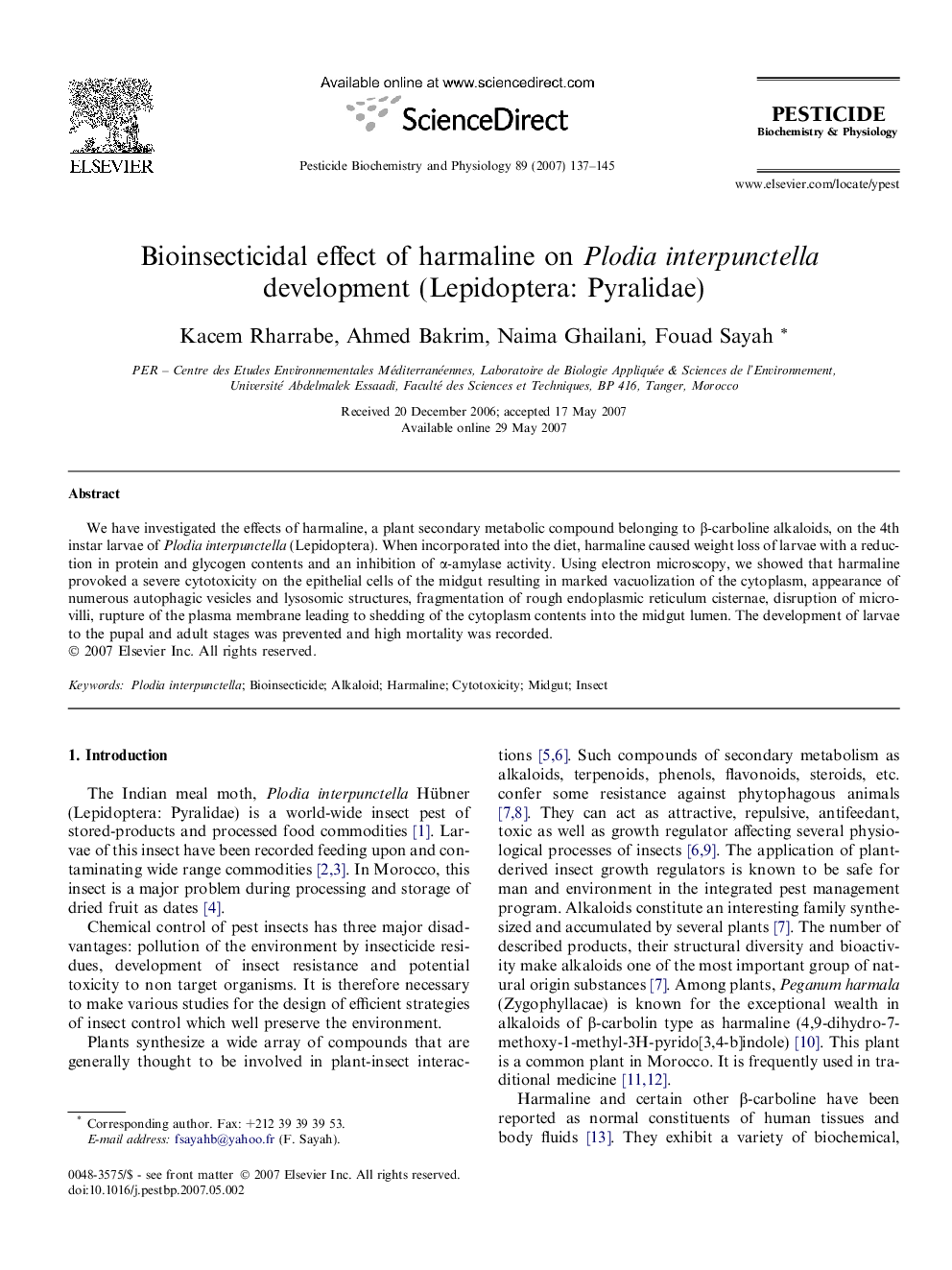| Article ID | Journal | Published Year | Pages | File Type |
|---|---|---|---|---|
| 2010083 | Pesticide Biochemistry and Physiology | 2007 | 9 Pages |
We have investigated the effects of harmaline, a plant secondary metabolic compound belonging to β-carboline alkaloids, on the 4th instar larvae of Plodia interpunctella (Lepidoptera). When incorporated into the diet, harmaline caused weight loss of larvae with a reduction in protein and glycogen contents and an inhibition of α-amylase activity. Using electron microscopy, we showed that harmaline provoked a severe cytotoxicity on the epithelial cells of the midgut resulting in marked vacuolization of the cytoplasm, appearance of numerous autophagic vesicles and lysosomic structures, fragmentation of rough endoplasmic reticulum cisternae, disruption of microvilli, rupture of the plasma membrane leading to shedding of the cytoplasm contents into the midgut lumen. The development of larvae to the pupal and adult stages was prevented and high mortality was recorded.
